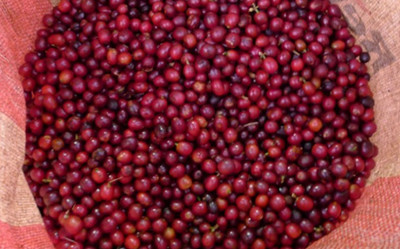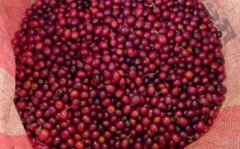Introduction of coffee origin-- introduction of Yemeni boutique coffee Yemen coffee characteristics of Yemeni coffee
Before the 6th century AD, Yemen was called Arabia, so coffee trees shipped from Yemen to other places were also called Arabian coffee trees. But the origin of these trees is Ethiopia, and the Dutch spread these coffee trees around the world. Dutch businessmen sailing eastward around the Cape of good Hope (The Cape Of Good Hope) travel across the east coast of Africa to the port of Mocha in Yemen before they begin their long trek to India. In 1696, the Dutch introduced coffee trees to Ceylon (now Sri Lanka) and then to Batavia in Java.

Mocha beans are smaller and rounder than most, which makes mocha beans look like peas-in fact, bean-shaped berry coffee beans (Peaberrybean) are sometimes called mocha beans. Mocha beans are similar in shape to Ethiopia's Harrar beans, with small particles, high acidity and a strange and indescribable spicy flavor. If you taste it carefully, you can tell the taste of chocolate, so the attempt to add chocolate to coffee is a natural development.
In Yemen, coffee growers plant poplars to provide shade for coffee to grow. As in the past, these trees are planted on steep terraces to maximize the use of less rainfall and limited land resources. In addition to Tippika Coffee and bourbon Coffee trees, more than a dozen different coffee species native to Ethiopia are grown in Yemen. But even good coffee, such as premium mocha, is air-dried and the peel is connected to the beans. Until now, Yemen often uses traditional stone mills to remove dry and hard shells, which makes the coffee beans irregular in shape and often damages them.
Despite the high quality and smooth aroma of Yemeni coffee, there is something unsatisfactory, that is, the quality can not be continuously guaranteed and the classification of its coffee beans is uncertain. Traditionally, the best coffee beans in Yemen come from Mattari, followed by Sharki, followed by Sanani. These beans are low in caffeine and are exported from December to April of the following year. The problem in the past was that coffee from the north was adulterated before it was shipped from the southern port of Aden. Only coffee shipped from the port of Hodeida can be determined to be genuine from the north. The vast majority of Yemeni coffee is grown in natural conditions, mainly because growers lack funds.
Important Notice :
前街咖啡 FrontStreet Coffee has moved to new addredd:
FrontStreet Coffee Address: 315,Donghua East Road,GuangZhou
Tel:020 38364473
- Prev

Cultivation of Arabica beans in China cultivation of Arabica coffee beans
The planting situation in China Arabica is deeply loved by Chinese people with a short history of coffee contact because of its strong fruity aroma. it was introduced to China by missionaries in the 19th century. It is widely planted in Panzhihua, Sichuan, and the dry-hot valley of the Jinsha River, which is more than 1000 meters above sea level in western Yunnan. The sunshine time in this area is long, and there is a great temperature difference between day and night. The local people solve the lack of seasonal rainfall by diverting water up the mountain.
- Next

The oldest Coffee introduction to Yemen Mocha Coffee characteristics of Yemen Mocha Coffee Yemen
The oldest coffee in the world-- Yemeni mocha Coffee Origin: Yemeni Grade: excellent granule: full acidity: slightly sour and strong aftereffect, but also sweetness evenness: smooth roasting: moderate flavor: chocolate flavor, slightly alcoholic flavor. Spicy Ethiopia is the first country in the world to find coffee, but Yemen is the first country in the world to use coffee as a crop.
Related
- Beginners will see the "Coffee pull flower" guide!
- What is the difference between ice blog purified milk and ordinary milk coffee?
- Why is the Philippines the largest producer of crops in Liberia?
- For coffee extraction, should the fine powder be retained?
- How does extracted espresso fill pressed powder? How much strength does it take to press the powder?
- How to make jasmine cold extract coffee? Is the jasmine + latte good?
- Will this little toy really make the coffee taste better? How does Lily Drip affect coffee extraction?
- Will the action of slapping the filter cup also affect coffee extraction?
- What's the difference between powder-to-water ratio and powder-to-liquid ratio?
- What is the Ethiopian local species? What does it have to do with Heirloom native species?

